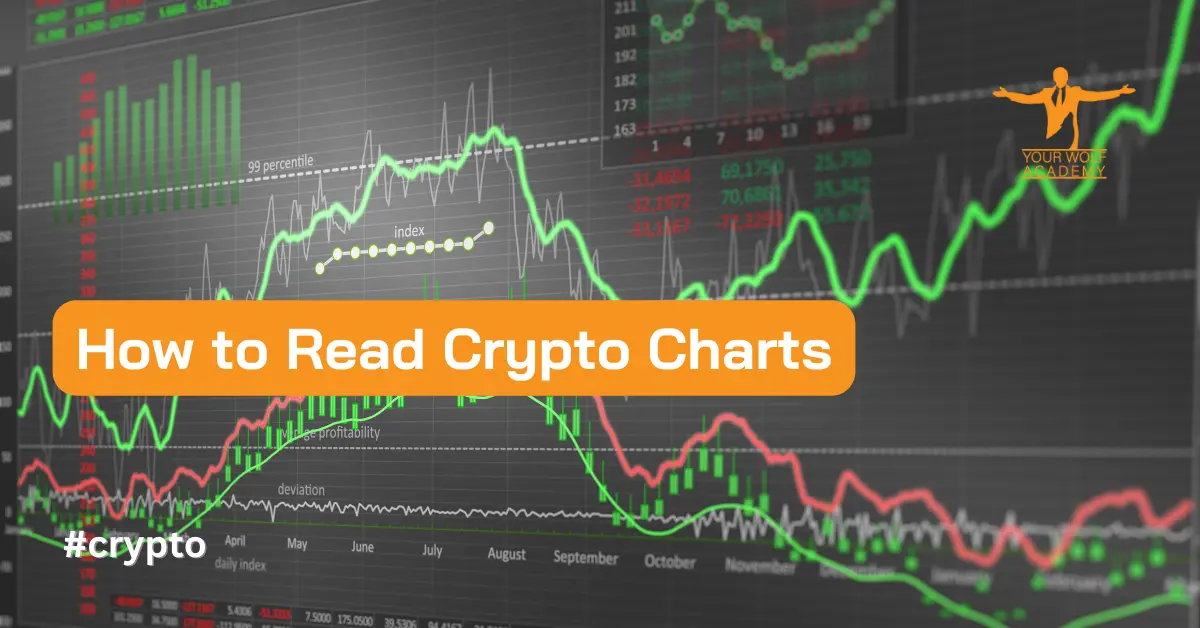Cryptocurrency trading has become increasingly popular in recent years, with many investors and traders looking to profit from the rapidly growing market. However, as with any other financial instrument, understanding how to read and analyze cryptocurrency charts is crucial for making informed investment decisions.
In this article, we will provide a comprehensive guide on how to read crypto charts, covering essential topics such as chart types, indicators, patterns, and more, aimed at helping beginners improve their trading skills.
Types of Crypto Charts
There are several types of charts that traders use to analyze cryptocurrency prices. The most commonly used chart types include:
- Line Charts: A line chart is the simplest type of chart that displays the price movement of a cryptocurrency over a specific time period. It shows the closing price of the cryptocurrency at the end of each time period, which is then connected by a straight line.
- Candlestick Charts: Candlestick charts provide more detailed information than line charts by displaying the opening, closing, high, and low prices of a cryptocurrency for each time period. Each time period is represented by a candlestick, with the body of the candlestick representing the opening and closing prices and the wicks representing the high and low prices.
- Bar Charts: Bar charts are similar to candlestick charts, but they use vertical lines to represent the high and low prices, with a horizontal line representing the opening and closing prices.
Understanding Indicators
Indicators are tools that traders use to analyze cryptocurrency charts and identify potential trading opportunities. There are several types of indicators, including:
- Moving Averages: Moving averages are one of the most commonly used indicators in cryptocurrency trading. They calculate the average price of a cryptocurrency over a specific time period and help traders identify trends and potential entry and exit points.
- Relative Strength Index (RSI): The RSI is a momentum indicator that measures the strength of a cryptocurrency’s price movement. It ranges from 0 to 100 and is used to identify overbought and oversold conditions.
- Bollinger Bands: Bollinger Bands are used to measure the volatility of a cryptocurrency’s price movement. They consist of three lines: a simple moving average, an upper band, and a lower band. The upper and lower bands represent two standard deviations from the simple moving average and are used to identify potential entry and exit points.

Identifying Chart Patterns
Chart patterns are recurring shapes and formations that appear on cryptocurrency charts. Traders use chart patterns to identify potential trading opportunities and make informed investment decisions. Some of the most commonly used chart patterns in cryptocurrency trading include:
- Head and Shoulders: The head and shoulders pattern is a bearish pattern that indicates a potential trend reversal. It consists of three peaks, with the middle peak (the head) being the highest.
- Double Top and Double Bottom: The double top pattern is a bearish pattern that occurs when a cryptocurrency’s price hits a resistance level twice and fails to break through. The double bottom pattern is a bullish pattern that occurs when a cryptocurrency’s price hits a support level twice and bounces back up.
- Triangle Patterns: Triangle patterns are a common continuation pattern in cryptocurrency trading. They can be either bullish or bearish and are formed when a cryptocurrency’s price moves within a converging trendline.
Risk Management
Risk management is an essential aspect of cryptocurrency trading. Traders should always have a risk management plan in place to minimize potential losses. Some of the most commonly used risk management strategies in cryptocurrency trading include:
- Stop Loss Orders: Stop loss orders are a type of order that traders can use to automatically close out a position when a cryptocurrency’s price reaches a certain level. This helps to limit potential losses and protect traders from sudden market movements.
- Position Sizing: Position sizing refers to the amount of a trader’s portfolio that they allocate to a specific trade. Traders should always limit their exposure to any single trade to a percentage of their overall portfolio to minimize potential losses.
- Risk-to-Reward Ratio: The risk-to-reward ratio is a measure of the potential profit of a trade compared to the potential loss. Traders should always aim for a risk-to-reward ratio of at least 1:2 to ensure that potential profits outweigh potential losses.
Tips for Reading Crypto Charts
Here are some additional tips for reading cryptocurrency charts:
- Use Multiple Timeframes: Traders should always analyze cryptocurrency charts using multiple timeframes to get a better understanding of the overall trend.
- Use Technical Analysis: Technical analysis is the process of using indicators and chart patterns to analyze cryptocurrency charts. Traders should always use technical analysis to identify potential trading opportunities and make informed investment decisions.
- Stay Up-to-Date with Market News: Cryptocurrency prices can be affected by a wide range of factors, including news and events. Traders should always stay up-to-date with the latest market news to make informed trading decisions.
Conclusion
In conclusion, understanding how to read and analyze cryptocurrency charts is crucial for making informed investment decisions. Traders should always use a combination of chart types, indicators, and chart patterns to analyze cryptocurrency prices and identify potential trading opportunities.
Additionally, risk management is an essential aspect of cryptocurrency trading, and traders should always have a risk management plan in place to minimize potential losses. By following these tips and strategies, beginners can improve their trading skills and increase their chances of success in the cryptocurrency market.
Your Wolf Academy offers a range of educational resources to help traders succeed, including free signals, technical analysis, and weekly webinars. Sign up today and get a recommendation for a regulated brokerage company that suits your needs.


